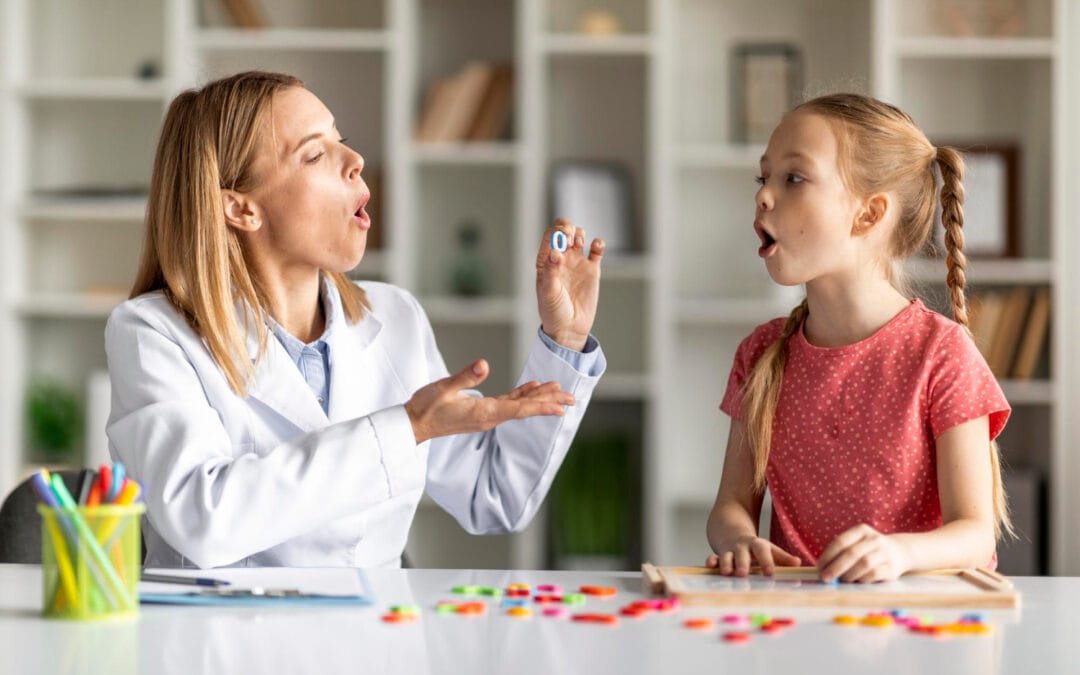Combining speech and occupational therapy can significantly boost a child’s development. Speech-language pathologists (SLPs) and occupational therapists (OTs) work together to address various challenges that children face, from communication issues to motor skills difficulties. By integrating these therapies, we can maximize the benefits and help children make faster progress.
SLPs focus on improving communication skills, such as speaking, listening, and understanding language. OTs, on the other hand, help children develop fine motor skills, sensory processing, and daily living activities. When these two therapies are combined, they offer a comprehensive approach that addresses multiple aspects of a child’s development at once.
This coordinated approach not only accelerates learning but also enhances the overall effectiveness of therapy. Children can improve in areas that overlap between speech and occupational therapy, such as using gestures to communicate or improving hand-eye coordination for better articulation.
By working together, SLPs and OTs can create a more holistic and effective treatment plan tailored to each child’s unique needs.
The Benefits of Combining Speech and Occupational Therapy
Combining speech and occupational therapy offers a multitude of benefits for children with developmental challenges. This integrated approach allows for a comprehensive treatment plan that addresses both communication and motor skills simultaneously. By working on these areas together, children can make faster and more cohesive progress.
One of the main benefits is the boost in overall effectiveness. For example, a child working on speech may also need to develop fine motor skills to articulate words correctly. An occupational therapist can help improve the child’s hand-eye coordination and dexterity, which supports the speech goals set by the speech-language pathologist. This coordinated effort ensures that improvements in one area positively affect the other.
Additionally, combining these therapies can improve a child’s confidence and social skills. As children develop better communication abilities, they often become more willing to interact with others. The motor skills gained from occupational therapy further support these interactions by enabling children to participate more fully in activities like playing games or engaging in classroom tasks. This holistic approach helps children to thrive both academically and socially.
How SLPs and OTs Collaborate for Enhanced Results
SLPs and OTs collaborate by sharing their expertise and creating joint treatment plans tailored to each child’s needs. This teamwork starts with thorough assessments from both therapists, identifying specific areas where a child needs support. Once these areas are pinpointed, the therapists develop a coordinated plan to address them efficiently.
Regular communication between the therapists ensures that they are always on the same page regarding a child’s progress. They hold routine meetings to discuss what is working and what might need adjustment. This ongoing dialogue helps to refine treatment strategies and ensures that therapy sessions build on each other, rather than working in isolation.
In the therapy sessions, SLPs and OTs might use combined activities that target both speech and motor skills. For instance, a session could include actions like using play dough to form shapes while naming them aloud. This engages the child’s fine motor skills and enhances their vocabulary simultaneously. By integrating these activities, children can grasp concepts more quickly and apply their learning in varied contexts.
This collaborative approach maximizes the benefits of each therapy and makes the process more engaging and less overwhelming for the child. By seeing consistent faces and experiencing seamless transitions between therapy activities, children can feel more comfortable and motivated during their sessions.
Key Areas Addressed in Combined Therapy Sessions
In combined therapy sessions, both speech and occupational therapists focus on several key areas to foster comprehensive development. Here are some of the main areas they address:
1. Communication Skills: These sessions help children develop the ability to express themselves clearly and understand what others are saying. Activities may include practicing conversation skills, improving vocabulary, and learning to articulate words correctly.
2. Fine Motor Skills: OTs work on tasks that improve hand-eye coordination, dexterity, and motor control. These skills are crucial for everyday activities like writing, buttoning clothes, and eating with utensils. SLPs might integrate these motor tasks to enhance speech clarity and control.
3. Sensory Processing: Children often face challenges in processing sensory information. OTs help by designing activities that address these sensory issues, making it easier for children to handle various textures, sounds, and visual stimuli. This, in turn, helps SLPs as children become more comfortable in their surroundings, enabling better focus and participation in communication exercises.
4. Social Skills: Combined therapy sessions also emphasize the development of social skills. Children learn how to interact with peers, take turns, share, and express their feelings appropriately. These skills are critical for their success in group settings like classrooms or peer socialization groups.
By addressing these areas, combined therapy sessions provide a well-rounded approach that helps children thrive in multiple aspects of their lives.
Tips for Parents to Support Progress at Home
Parents play a vital role in supporting their child’s progress outside of therapy sessions. Here are some practical tips to help reinforce the skills learned during combined therapy:
1. Create a Consistent Routine: Establishing a daily routine that includes time for practice can help your child reinforce new skills. Designate specific times for reading, playing educational games, or engaging in activities that require fine motor skills.
2. Use Visual Aids: Incorporate visual supports like picture charts, gesture cards, and labeled items around the house. These aids can help your child remember and practice new words, phrases, and actions learned during therapy.
3. Engage in Play-Based Learning: Use toys and games that encourage communication and motor skills. Playing board games, building with blocks, or doing craft projects are great ways to make learning fun and interactive.
4. Encourage Social Interaction: Arrange playdates or participate in peer socialization groups where your child can practice their social skills. Encourage them to communicate with others, share, and take turns.
5. Model Good Behavior: Demonstrate clear and correct speech and actions. Children often imitate adults, so showing them how to perform tasks or communicate effectively will help them learn faster.
By incorporating these tips into your daily routine, you can support your child’s progress and make the most of their therapy sessions.
The Synergistic Benefits of Speech and Occupational Therapy
Combining speech and occupational therapy offers numerous benefits for children, from enhancing communication skills to developing fine motor abilities. This integrated approach ensures that children receive comprehensive care tailored to their unique needs. By collaborating closely, SLPs and OTs can create a more effective and engaging treatment plan, resulting in faster progress and improved outcomes.
Parents also play a crucial role in reinforcing these skills at home. By creating consistent routines, using visual aids, and encouraging social interaction, you can help your child practice and apply what they learn in therapy. This combined effort ensures that your child continues to grow and succeed in all areas of their development.
If you believe your child could benefit from combined speech and occupational therapy, reach out to Watch Me Shine. Let’s work together to help your child achieve their full potential. Contact us today to learn more about our services and how we can support your family’s needs!

